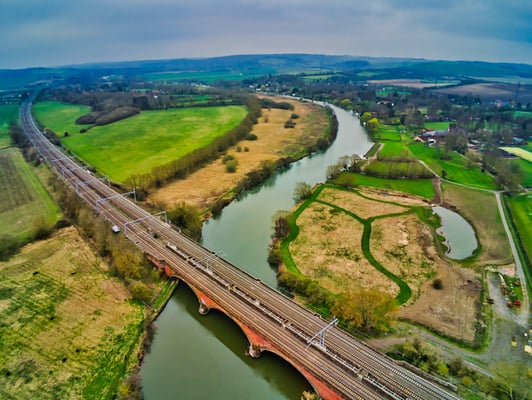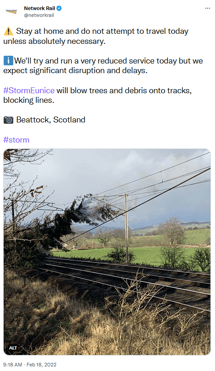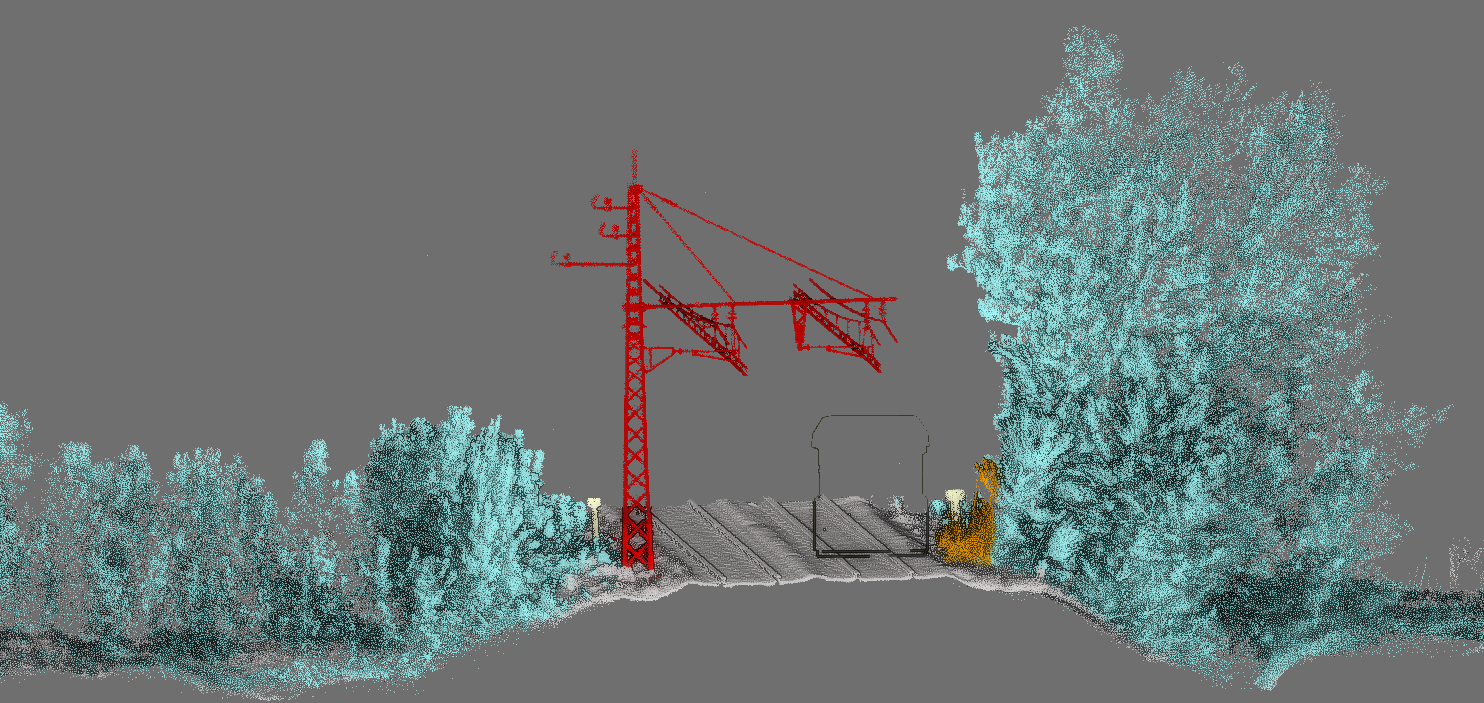Rail Gauging and Vegetation Management with AI from Point Clouds

Rail Vegetation Management & Maintenance
All railway and railroad infrastructure managers must be content that their railway lines are maintained clear of any physical hazards to the trains/trams and are operational within safety tolerances. All have little alternative approach at present other than laborious monitoring procedures, that are not easily scalable to large infrastructure. It is also costly, with UK gauge clearance schemes typically costing over £10 million, even for short stretches of route.
Therefore, rail infrastructure operators are often unable to plausibly deliver their monitoring objectives in a credible time-frame utilising the current approaches to gauging and vegetation management. They have to be content that their railway lines are maintained clear of any physical hazards to the trains/trams of which vegetation presents a constant risk. The UK rail network has around 6.3 million trees that exist on land owned by the maintainer, Network Rail, alone. Railways and railroads need to manage vegetation for a few reasons. Firstly, overgrown vegetation can obstruct the view of train drivers and signal operators, which can lead to accidents. Vegetation can also interfere with the functioning of the railway itself, for example by encroaching on the tracks and causing derailments, or by blocking ventilation or drainage grates causing equipment to overheat or flooding. In addition, vegetation can cause damage to the railway infrastructure, such as by growing into and undermining the foundations of bridges and embankments or falling in storms. Finally, uncontrolled vegetation can create a fire hazard, especially in dry conditions. For these reasons, railways need to regularly maintain and manage the vegetation growing near their tracks.
Railways and railroads need to manage vegetation for a few reasons. Firstly, overgrown vegetation can obstruct the view of train drivers and signal operators, which can lead to accidents. Vegetation can also interfere with the functioning of the railway itself, for example by encroaching on the tracks and causing derailments, or by blocking ventilation or drainage grates causing equipment to overheat or flooding. In addition, vegetation can cause damage to the railway infrastructure, such as by growing into and undermining the foundations of bridges and embankments or falling in storms. Finally, uncontrolled vegetation can create a fire hazard, especially in dry conditions. For these reasons, railways need to regularly maintain and manage the vegetation growing near their tracks.
Vegetation maintenance and gauging are vitally important for all railroads and railways to function safely: there must not be an interference fit between the infrastructure and the vehicle or with other vehicles. It is also vitally important for its commercial viability: the bigger the vehicle, the more space there is for cargo, containers and passengers to travel in comfort, and for train auxiliaries, a strong contributor to reliability.
In the UK, Network Rail has an obligation to be able to advise train operators of the status of the infrastructure: the Railways (Interoperability) Regulations 2011 require it to be able to publish an accurate Infrastructure Register. The ROGS Regulations require all infrastructure managers to have a Safety Management System to control all the risks, including gauging. All other rail infrastructure managers in the EU, EEA and Switzerland have the same obligation.
3D data capture of the rail environment
Measurement systems based on LiDAR scanning are being widely adopted in the civil engineering sector. Here, useful information is abstracted from 3D point clouds created from scans of objects and scenes of interest. Such techniques have direct applicability to the monitoring and maintenance of the permanent way (P-way).
With ubiquitous accurate measurement of the state of the asset, better decisions can be made on infrastructure capability, design, maintenance and renewals; better information on the status of the “fixed” infrastructure, its rate of degradation and behaviour, supports prioritised maintenance interventions much more effectively, reducing the number of times that staff are required to go on or near the track, and easing the workload of engineers, vastly improving their productivity.
The Vercator approach
Vercator uses the state of the art in point cloud 3D object recognition and apply the classified results to rail vegetation management. Vercator applies AI through machine learning and advanced computer models to identify and categorise objects and structures along a line of route. From this it is possible to measure how far from the loading gauge or overhead line equipment (OLE) envelope vegetation is located and where interventions are required. The new system can also support more informed planning of route gauge enhancements, new vehicle introductions and vehicle cascades.

There will also be potential uses for this product in renewals and upgrade projects to enable clearance evaluation and verification of temporary or staged works, because of the significantly improved processing time.
The outputs of Vercator’s processing move engineers on from low-level work identifying structures and checking clearances to being able to focus on high added-value work and setting proactive intervention strategies on routes to either maintain or improve clearances, and to identify problems quickly and easily with vegetation, structures, or track fixity.
The use of this technology should not be limited to gauging of railway infrastructure or vegetation control, but should also be applicable in track maintenance and the design of renewals and upgrade projects, during construction and as a post-construction validation, since the processing time will be shortened from “years” (according to Network Rail) to hours with Vercator.

Similarly freight operators would like to increase the size of their cargos. The Network Rail Freight Network Study listed eight route clearance priorities to address growing demand for capacity and to create opportunities for modal shift.
Delivering the Vercator solution from the cloud brings with it the associated benefits of ease of access, scalable (and therefore fast) processing, data security and flexibility. Being cloud-based means there is no requirement for the operator to invest in IT hardware, so the risk of obsolescence is removed, while the service is retained. The broad-based range of customers also supports longer-term development and commercial viability.
Ultimately, with labour and contractor costs rising, vegetation management interventions need to be optimised and expeditious to optimise budget & reliability for the operator, their customers and the system. The Vercator approach presents one part of the puzzle to help do this by leveraging cutting edge AI for vegetation management.

